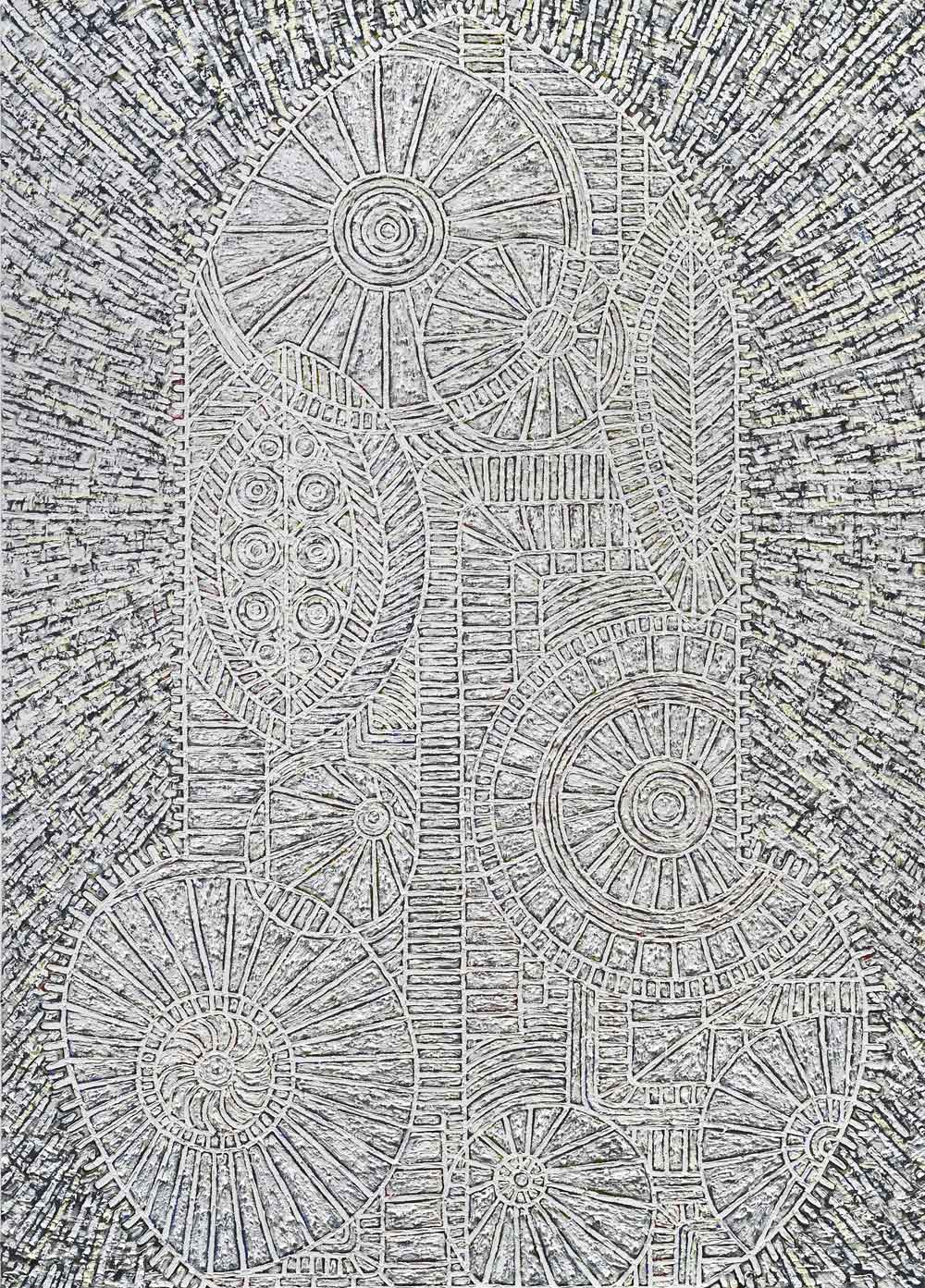“Helen Rebekah Garber,” ARTPULSE Magazine, Vol. 4 . no. 14 Winter 2013.
Humans have constantly employed meditative and repetitive actions to create immersed states that signal towards a profound desire to escape from the constrictions of embodied corporeality; the oppressiveness of being stuck in a body that must constantly face its own limitations is quite a bummer. The recent work in Helen Rebekah Garber exhibition, “Spells, Spires, and Other Delicate Business,“ fits perfectly within this precedent, presenting a palimpsest of transcendental referents that speak to more than the sum of their parts.
Impressive, heavily impastoed paintings are the highlight of Garber’s show. Each consists of a basic phallic form circumscribing various geometric patterns referencing meditative and metaphysical precedents. Walking among these works, one is confronted with a barrage of geometric quotations lifted from diverse sources, from the staccato incising on Central African Lulua Masks to the interlacing patterns emblazoned on religious vestments in Byzantine mosaics. While some of Garnder’s works do employ direct references to classic Christian depictions of the Madonna and Child, her paintings avoid falling into a didactic or overtly illustrative trap and instead register an interest in the subject of transcendence instead of any specific religious belief or ideology. In a particularly striking painting, Tower II, Garber’s characteristically flat totemic imagery contains starbursts coupled with embellished amygdaloidal forms, as well as catawampus pin weel forms signifying constellations or vortexes. The resulting conglomeration of obsessively applied brushstrokes comes across as reverential, humble, but strangely clinical.
To construct her paintings Garber puts down colorful layers of oil paint in between clearly drawn lines that, like lead cames holding together stained glass, provide the basic architectonic structure holding the imagery together. After this she obfuscates her chromatic process almost entirely by applying a white patina to every area of color. Garber’s painted whiteness functions as a kind of critical barrier allowing one to maintain a distance from imagery at hand. After all, the obfuscation of a thing makes its presence even more conspicuous, reducing subject to elemental sign, a testament to almost primordial communicative power. While it might seem like an evasive maneuver, a withdrawal, the unifying gesture is actually an invitation for viewers to reflect on the subject of the work and not the loaded religiosity of its referent.
Garber’s exhibition also includes heavily worked black and white drawings that function like sketches of the larger paintings yet lack the physical impact of their pigmented progeny. Unfortunately the drawings read like schematic plans, a programmatic approach that gives away too much. Their juxtaposition with the larger paintings is like the difference between seeing preparatory drawings for the mosaics in St. Peter’s Cathedral and witnessing the real thing in person and being confronted with the mind-blowing reality of the accumulation of thousands of tiny ceramic squares. In the presence of such work, physical labor is wedded to the sign of devotion. Thankfully Garber’s paintings make this connection effectively, with just enough restraint to allow for sustained contemplation.
©2024 Tucker Neel. All rights reserved.
